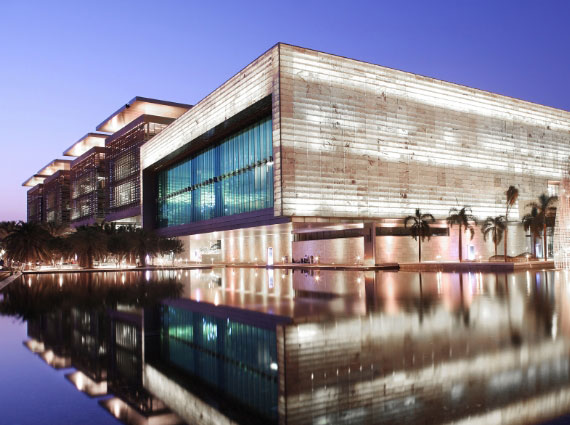
Project Details
Program
Energy Resources and Petroleum Engineering
Field of Study
energy storage and geothermal
Division
Physical Sciences and Engineering
Faculty Lab Link
Center Affiliation
Geo-Energy & Mineral Resources Platform
Project Description
Despite advances in renewable energy, the lack of efficient long-term storage remains a major obstacle to balancing energy supply and demand. Existing underground thermal energy storage systems (UTES) rely on fluid injections, limiting their control, scalability, and environmental acceptance. Therefore, storing renewable energy directly as heat in the subsurface represents a promising pathway for
sustainable long-term energy storage. The viability of such systems depends not only on technical factors – such as reservoir characteristics and heat transfer efficiency – but also on economic and political considerations, including investment costs and regulatory frameworks.
About the Researcher
Thomas Finkbeiner
Research Professor, Energy Resources and Petroleum Engineering
Affiliations
Education Profile
- PhD, Stanford University, 1998
- MSED, Stanford University, 1994
Research Interests
a€‹Prof. Finkbeiner investigates how in response to pore pressure changes in a field/reservoir (i.e., injection, stimulation, or depletion) the reservoir rocks respond mechanically and how this impacts flow (e.g., production) from the affected reservoirs. Monitoring, laboratory testing, as well as numerical modeling will provide an understanding and enhanced predictive capabilities for these phenomena for a variety of reservoir types such as fractured reservoirs (in particular carbonates), unconventional reservoirs, and so-called brown fields (that are produced using improved and enhanced recovery methods). Another focus is on wellbore stability (i.e., mechanical integrity of boreholes both during drilling and production/injection) and real-time data acquisition and risk mitigation. Guaranteeing successful well construction is paramount for cost reduction and optimizing well delivery.A Prof. Finkbeiner is also involved in the university's circular carbon, geothermal, and Red Sea research initiatives and thrusts.Selected Publications
- Cardona A., Finkbeiner T., and J.C. Santamarina, submitted. Natural Rock Fractures: From Aperture to Fluid Flow.
- Hafez A., Finkbeiner T., Liu Q., Alouhali R.A., MoellendickT.E., Santamarina J.C., 2021. The effect of particle shape on discharge and clogging. Nature, Scientific Reports, (2021) 11:3309.https://doi.org/10.1038/s41598-021-82744-w
- Finkbeiner T., Bertotti G., Geiger S., 2019, Introduction to the thematic collection: Naturally fractured reservoirs. Petroleum Geoscience Geological Society of London Publications: Naturally Fractured Reservoirs. https://doi.org/10.1144/petgeo2019-122.
- Perbawa, A., Gramajo, E., Finkbeiner, T., Santamarina, J.C., 2019. Global vs Local Strain Measurements in Triaxial Tests a- Implications. ARMA 19-1717. 53rd US Rock Mechanics/ Geomechanics Symposium, New York, June 2019.
- Finkbeiner T., Chandra V., Vahrenkamp V., Yalcin B., Ramdani A., Perbawa A. 2018. Petrophysical and Geomechanical Properties of Late Jurassic Carbonates Outcropping in Central Saudi Arabia: Correlation with Depositional Sequences and Diagenetic Overprints. Search and Discovery Article #51479, Online Journal for E&P Geoscientists, (2018), https://doi.org/10.3997/2214-4609.201901464.
Desired Project Deliverables
The primary objective of this thesis is to evaluate the technical and economic feasibility of storing solar energy directly as heat in the subsurface through the creation of an artificially heated geothermal reservoir. This concept aims to provide a controlled, injection-free approach to underground thermal energy storage, contributing to the broader goal of enhancing renewable energy reliability and grid
stability.
Utilizing simulation results from heat transfer and storage behavior models of a solar-powered resistive rod within a porous reservoir using OpenGeoSys the main deliverables would be
i) sensitivity analyses on key geological and operational parameters to assess their
impact on storage efficiency.
ii) evaluate the technical feasibility of maintaining stable thermal conditions suitable for long duration heat storage and recovery and economic, and regulatory feasibility.
The project will draw on data from reservoir rocks in Saudi Arabia or other
datasets available as well as GEMs platform lab facilities to measure some rock thermal properties and do short term heat transfer experiments.
Recommended Student Background
experience in modeling heat transfer and storage behavior
geothermal systems
sensitivity analyses on key geological and operational parameters
policy and regulatory aspects